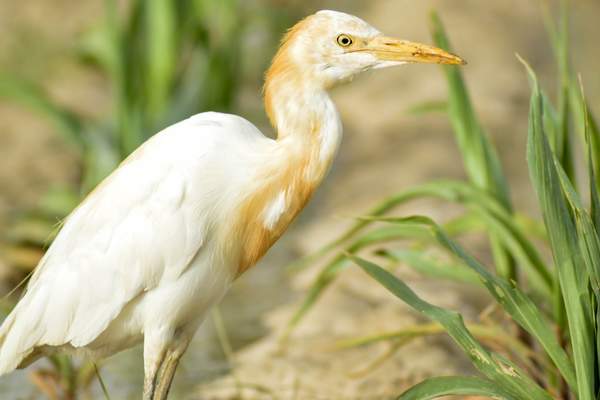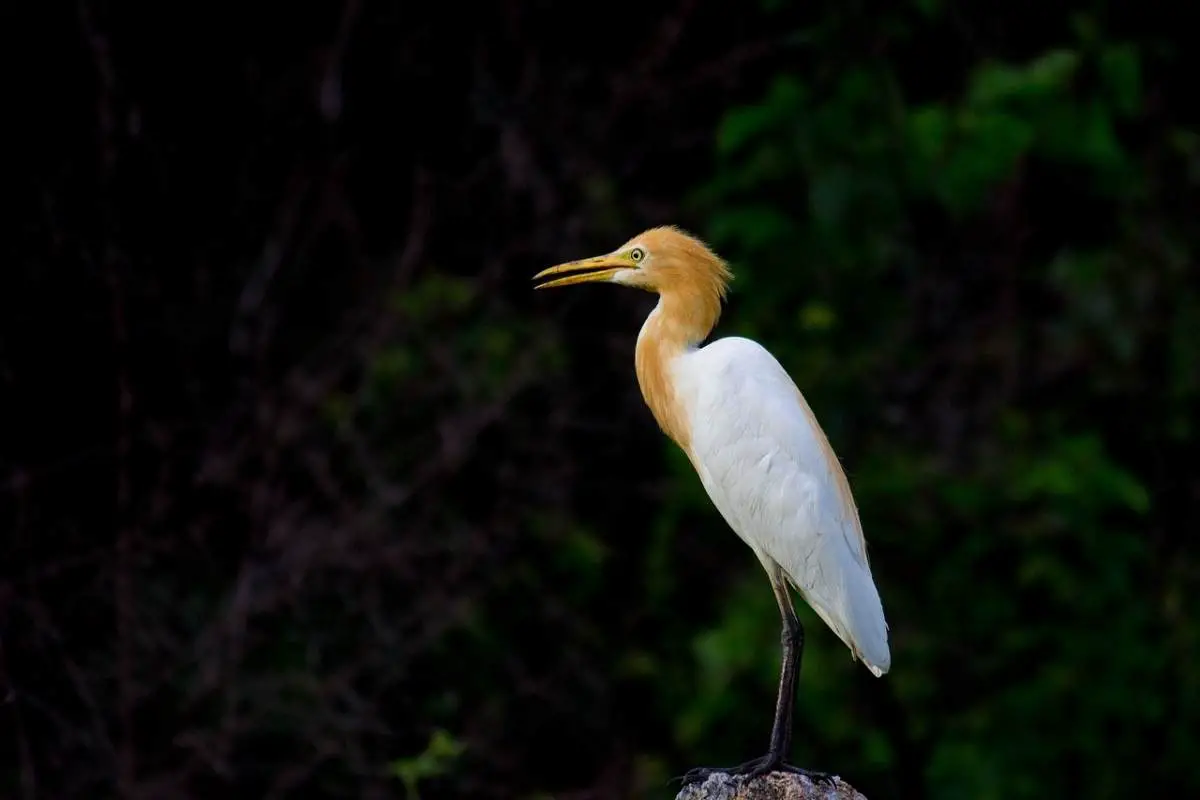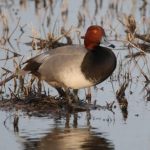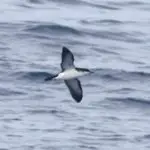Common Name: Cattle Egret
Scientific Name: Bubulcus ibis| Size | Diet | Range in Hawaii | Status in Hawaii |
|---|---|---|---|
| 9.8 in. | insects such as locusts and grasshoppers | All Islands | least concern |
The Cattle Egret (Bubulcus ibis) is a small, white heron that is native to much of the Old World, including parts of Europe, Asia, and Africa. In recent years, the Cattle Egret has also become established in many parts of the New World, including North, Central, and South America, as well as various islands in the Caribbean.
Cattle Egret
Appearance

The Cattle Egret is a small, white heron with a short, thick neck and a sturdy build. It has a body length of about 25 cm and a wingspan of around 75 cm. Its head and neck are white, with a short, thin, black bill and black legs.
The Cattle Egret has a distinctive white plumage, which is often tinged with yellow or orange during the breeding season. It has a small patch of bare skin on its head and neck, which can turn pink or red during courtship.
The Cattle Egret has long, thin wings, which it uses to soar and glide in search of food. Its wingspan is relatively short for a heron, but it is able to fly swiftly and maneuver easily in flight.
Diet
The Cattle Egret is an opportunistic feeder that feeds on a wide variety of insects and other small invertebrates. It is an active forager, and it often follows livestock, such as cows and horses, as they graze, taking advantage of the insects and other small animals that are disturbed by the movement of the animals.
The Cattle Egret is also known to feed on insects that are attracted to human activity, such as those found in agricultural fields or around garbage dumps. In addition to insects, the Cattle Egret may also feed on small rodents, lizards, frogs, and other small vertebrates.
It is an adaptable species that is able to exploit a wide range of food sources, and it is able to adjust its diet according to the availability of prey in its local environment. The Cattle Egret typically feeds by standing motionless or walking slowly and methodically, searching for prey on the ground or in the water. It uses its sharp, pointed bill to snatch prey items, and it may also use its wings to flush out prey from hiding.
Behavior
In terms of its social behavior, the Cattle Egret is a gregarious species that is often found in large flocks, particularly during the non-breeding season. During the breeding season, the Cattle Egret is known to be more territorial, and it may defend a territory around its nest site.
The Cattle Egret is a vocal species, and it is known to make a variety of calls and songs, including a distinctive “kow-kow” call that is used to communicate with other members of the flock. The Cattle Egret is a polygamous species, and males typically have more than one mate.
Nesting
The Cattle Egret builds a nest of twigs and sticks, which it typically places in a tree or shrub near water. The nest is a shallow cup that is lined with softer materials, such as grasses or feathers. The female lays a clutch of 2-6 eggs, and both parents participate in incubating the eggs and raising the chicks.
The eggs are incubated for about 21-26 days, and the chicks hatch altricial (helpless and dependent on their parents for care and feeding). The chicks are fed a diet of insects and other small invertebrates by both parents, and they fledge (leave the nest) at around 25-30 days of age.
Habitat

In its native range, the cattle egret is found in a variety of habitats, including grasslands, marshes, wetlands, and agricultural fields. It is often found in close association with livestock, as it feeds on insects that are stirred up by the movement of the animals. The cattle egret is also found in a variety of other habitats, including urban areas, parks, gardens, and wetlands.
Range
The cattle egret is now found on all of the main Hawaiian Islands, and it is a common sight in many areas.
Conservation Status
Although the Cattle Egret is not currently considered to be threatened, it is important to note that the species has experienced some declines in certain parts of its range due to habitat loss and degradation, as well as other human-induced impacts.
In some areas, the Cattle Egret may be impacted by pollution, pesticides, and other chemicals, which can affect its food sources and breeding success. It is also important to note that the Cattle Egret is a migratory species in some parts of its range, and it is vulnerable to the effects of climate change, which can alter the availability of food and suitable breeding sites.
Interesting Facts
1. They are small
Cattle Egrets are small, stocky herons that are about the size of a chicken. They have a white plumage, a yellow bill, and long, spindly legs.
2. They are opportunistic feeders
Cattle Egrets are opportunistic feeders and will also eat small vertebrates, such as frogs and lizards, as well as insects, spiders, and worms.
3. They are highly adaptable
Cattle Egrets are highly adaptable and can thrive in a variety of habitats, including grasslands, wetlands, and agricultural areas.
4. They are social birds
Cattle Egrets are social birds and often nest in large colonies. They build nests in trees or bushes, and both male and female birds take turns incubating the eggs and caring for the young.
5. They have a habit of following herds of cows
Cattle Egrets are known for their habit of following herds of cows and other large mammals, as they pick insects and other small prey from the ground as the animals move. This behavior gives them their common name.
Frequently Asked Questions
What do Cattle Egrets look like?
Cattle Egrets are small, stocky herons with a white plumage, a yellow bill, and long, spindly legs. They are about the size of a chicken.
What do Cattle Egrets eat?
Cattle Egrets are opportunistic feeders and will eat a variety of prey, including insects, spiders, worms, and small vertebrates such as frogs and lizards.




